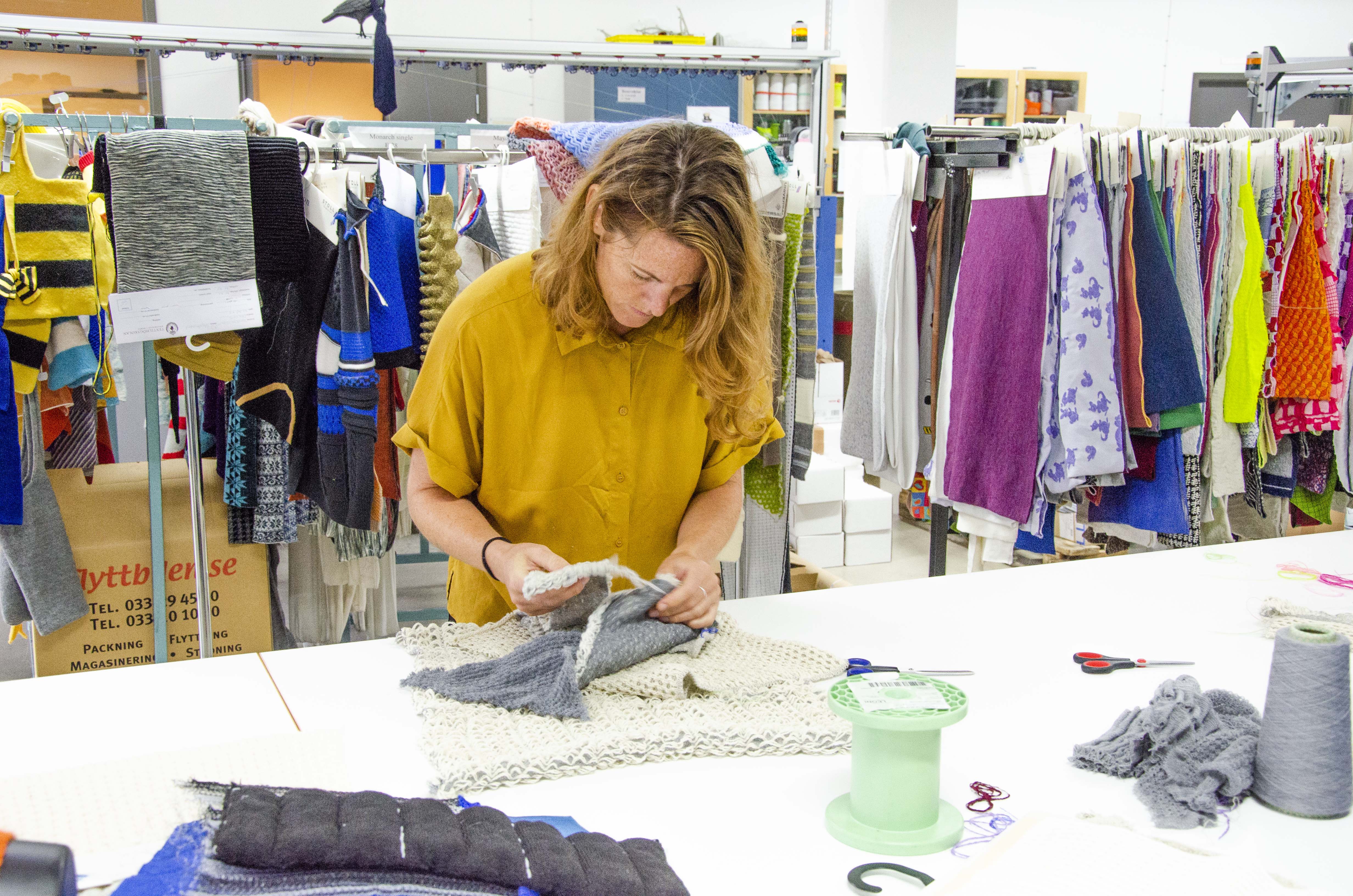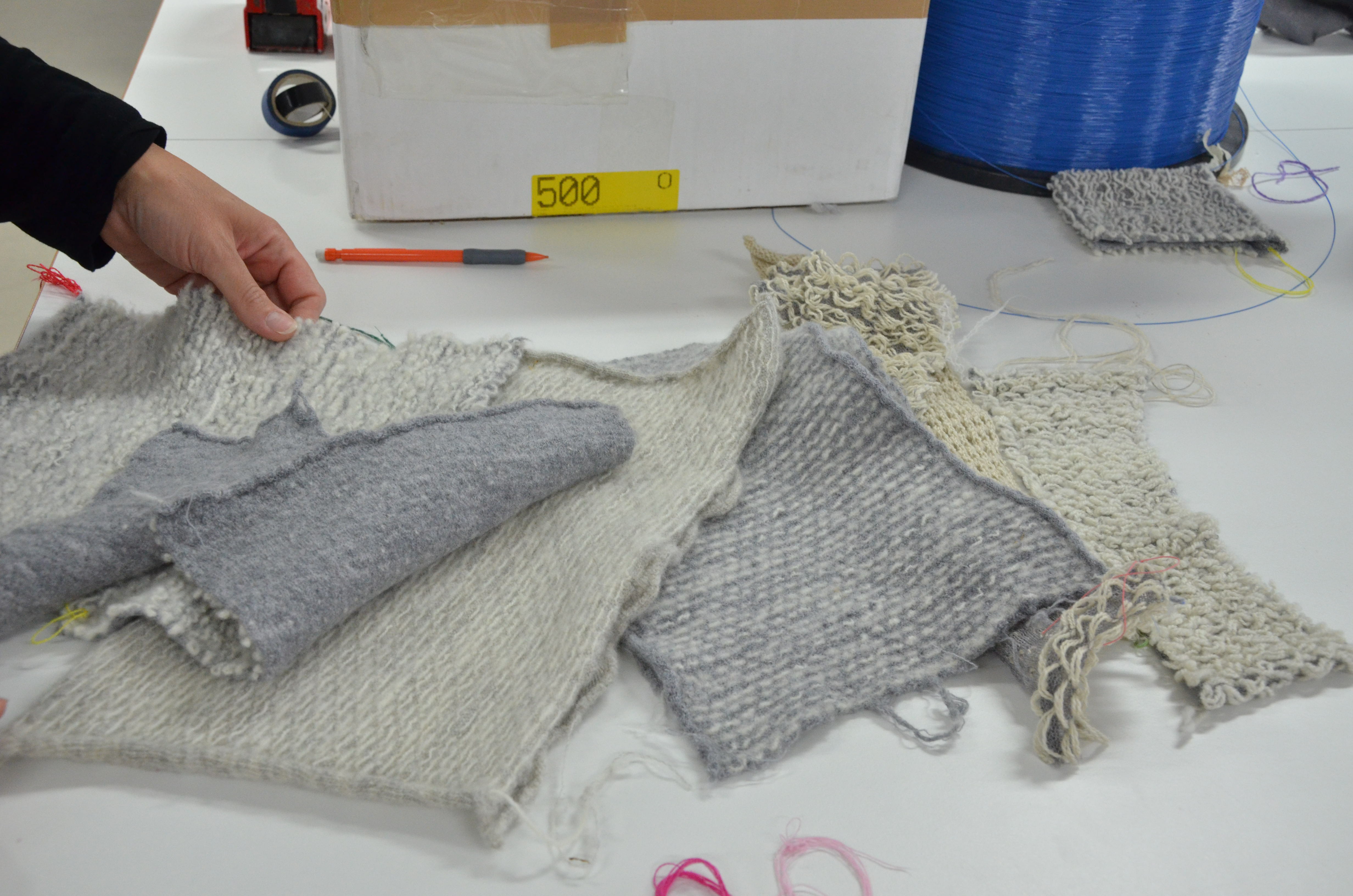
- Structures in wool
- Innovative Materials

Experimenting with various knitting techniques and yarn thicknesses to create structures and different functionality such as insulation, low weight, and moisture absorption. The right combination of knitting techniques such as braid patterns, wave patterns, and mesh results in reduced material consumption with maintained quality and comfort. Zero waste knitting techniques have also been in focus.
100% Wool
Houdini Sportswear
A large amount of Swedish wool is being thrown away as waste or not used as a resource in the clothing industry. How could this great technical fibre become a more attractive material for a wider range of clothes? Using 100% wool from Jämtland in northern Sweden, the idea has been to work with single-origin natural fibers in order to achieve a biodegradable fabric in a closed loop system.






The textile fiber system is under pressure from several directions:
• Geopolitical instability requires a more resilient textile fiber system that can utilize
more sources of raw material.
• Economic- and population growth will likely result in doubled demand for textile
fibers in the coming decades from already stressed sources.
• To limit climate change to 1,5 degrees Celsius in accordance with the Paris
Agreement we must consciously recycle fibers and use raw material sources that can
build soil health.
In the module Innovative materials, we explore alternative raw material sources that allows
companies to explore the entire circular economy as well as novel design and functional applications.
We showcase materials that has significantly lower sustainability impact, can help to strengthen soil
health, and build resilient communities.
All group objects:
Each decision during product development affects sustainability and circularity. To develop products with lower environmental impact, the design team needs to be well aware of each component and process, and their individual and combined effect on the final product and its longevity.
One challenge is having comprehensive knowledge regarding sutainability when it comes to all of the components and processes that are a part of the production and lifetime of the garment. An additional challenge is implementing alternative design methods that do not require virgin components. Ongoing research inspires and shows methods to re-make existing products to have new functionalities and designs with an upgraded look.
With higher traceability when it comes to materials, components, and processes, there are increased possibilities for more conscious decisions. If communicated well, this gives the consumer a better basis for decisions.